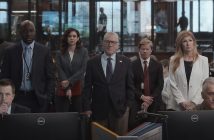Where do zombies come from? West African and Haitian folklore might be somewhere to start, but I was thinking of the Hollywood zombie, the shambling wretches whose genesis was first witnessed in George Romero’s seminal Night of the Living Dead. They owe a debt, or at least an offering of brains, to Herk Harvey and his only feature length film, Carnival of Souls.
Caked in sodden silt and muddy water, Mary crawls from a river, escaping a car plunged from the bridge above. Staggering dazedly away she appears unable to believe she lived through the accident. Restarting her life, she flees town to find new work as a church organist. Lodging in Salt Lake City, she succumbs to strange ‘episodes’; fading out of existence, invisible to the townsfolk, as all sound drains away. When she eventually slips back into reality, it is obvious something has altered her. Mary has also developed an unhealthy fascination with an abandoned seaside pavilion nearby.
Then a strange man appears at a distance, watching. He is gaunt and pale with black circles around his eyes. Here we witness our first glimpse of the look Romero would appropriate for his zombies. ‘The Man’ is a malignant presence, unseen by others and hounding Mary when she is at her most vulnerable.
More of these haunted entities rise from the ground and the water, pursuing her. As these uncanny forces block her every move, she is driven mad and cornered inside the pavilion itself where she learns her fate.
Carnival of Souls is an undeniably unsettling influence in the history of horror on film but it is far from perfect. There are some shocking instances of amateur acting and ham-fisted scripting. Witness the toe-curling, self-conscious way the local workers stop their work on cue and listen to Mary’s organ playing. Or the heavy-handed irony of the church warden telling Mary she needs to play with more soul.
Then there are performances that add texture to a simple tale. Mr Linden from the neighbouring apartment watches Mary with a voyeuristic gaze. His predatory intrusion represents a real world threat to Mary. Linden contrasts awkwardly with the plainly moralistic folk elsewhere in town. Hiligloss is adequately haughty and haunted as the heroine and carries the film well.
There are flashes of directorial brilliance, such as the transposing of the car dashboard with the knobs on the church organ, or the ghoulish reflection of The Man in the car window at night, a great example of special-effects done on a small budget. And the unforgettable climax with its dancing ghouls pirouetting before the camera. Harvey’s creative talent was possibly nurtured on German Expressionist cinema, as there are touches of Nosferatu’s Count Orlock in the long shadows cast by The Man as he enters the church.
And no appraisal of Carnival of Souls would be complete without mention of the arresting score, composed almost entirely of organ music and played by Gene Moore which accentuates the horror by being unnervingly oppressive.
In the end, Carnival of Souls plays like a short story from a Creepy or Eerie comic-magazine from the 1950s, complete with obligatory O. Henry twist ending. It is at once unforgettably haunting and almost laughably simplistic in its outlook. Yet in this tale the seeds were sown of a cinematic heritage that survives to this day, the modern zombie.
Unfortunately Harvey never made another feature length film and after its release, Carnival of Souls lapsed into obscurity. Rediscovered in the 80s and playing late at night on TV, it found new audiences and continues to this day to exert a freakish power over the viewer.
Carnival of Souls (1962, directed by Herk Harvey)




